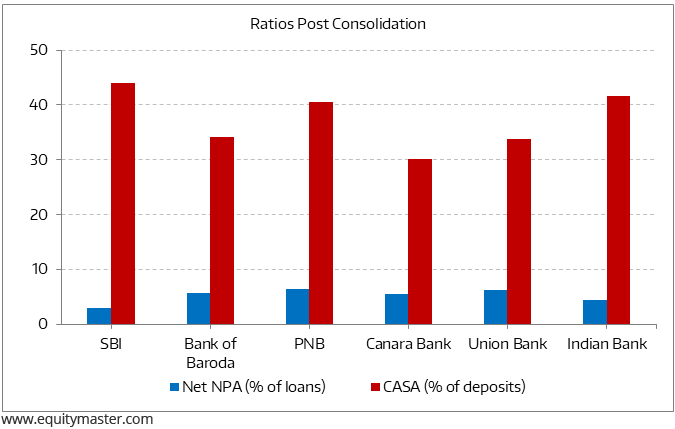- Home
- Todays Market
- Indian Stock Market News March 31, 2020
Sensex Opens Over 500 Points Up; Energy and Metal Stocks Lead Tue, 31 Mar 09:30 am
Asian stock markets are higher today as Chinese and Hong Kong shares show gains. The Shanghai Composite is up 0.7% while the Hang Seng is up 1.5%. The Nikkei 225 is trading up by 0.8%. US stocks rose on Monday as President Donald Trump followed last week's massive fiscal stimulus package by extending his stay-at-home guidelines, leaving investors to await more signs on the next stages of a deepening economic crisis.
Back home, India share markets rallied in the opening session. The BSE Sensex is trading up by 502 points while the NSE Nifty is trading up by 145 points. The BSE Mid Cap index and BSE Small Cap index opened up by 1.7% and 1.3% respectively.
All sectoral indices are trading in the green with oil & gas stocks, metal stocks and banking stocks witnessing maximum buying interest.
Note that, since the coronavirus outbreak, all BSE indices and NSE indices are down in the range of 25-35%.
Speaking of sectoral impact, in the article titled: Worst Hit Indian Sectors Amid Coronavirus Pandemic: 10 Points to Know, we dive deeper and look at how the impact has been on individual sectors...
Moving on, gold prices are currently trading up by 0.6% at Rs 43,842.
The rupee is currently trading at 75.39 against the US$.
The rupee settled 70 paise lower at 75.59 against the US dollar on Monday amid rise in coronavirus cases in the country and weak domestic equities.
Heavy selling in domestic equities dragged the local unit amid mounting fears of a coronavirus-led economic slowdown.
Moreover, strengthening of the American currency in the international market also weighed on the domestic currency.
At the interbank foreign exchange market, the rupee opened at 75.17. During the day, it lost further ground and finally settled at 75.59, down 70 paise over its previous close.
Speaking of gloomy economy, coronavirus fears and falling markets, Ajit Dayal has written an insightful piece, sharing his views in the latest edition of The Honest Truth.
Here's a snippet from the article:
- Is the meltdown over?
While the unravelling of the debt excess in the US and the developed world may have some more to play out, the question on an investor's mind in India is: Is the mayhem over and what should I do next?
On the face of it, there is some interesting Upside Potential, or potential profit, if you were to buy the specific stocks now and assume, they get back to their past peak levels over, say, the next 2 to 3 years.
With the help of either some jaadu mantar or some good policy.
But there are some "bets" I would be very cautious about: Yes Bank, Reliance and the INR, for instance.
You can read his entire article here: The Market Gets a Viral Attack.
Moving on to the banking sector. The Reserve Bank of India (RBI) has revealed that the scheme of merging 10 Public Sector Unit (PSU) banks into four bigger lenders is on schedule despite the country-wide coronavirus lockdown and will come into force from 1 April 2020.
Reportedly, the Oriental Bank of Commerce and United Bank of India will function as the branches of the Punjab National Bank starting from the next month.
Similarly, all Allahabad Bank branches will be treated as branches of the Indian Bank and all branches of Andhra Bank and Corporation Bank will function as Union Bank of India branches with effect from 1 April 2020. Also, Syndicate Bank will function as the branch of Canara Bank.
The notice for the above amalgamations was released at the start of March this year.
However, unions of bank officers had written to the Prime Minister Narendra Modi last week asking for a delay in the deadline in view of the coronavirus lockdown.
On 26 March, Finance Minister Nirmala Sitharaman made it clear that there would be no change in plans and the merger scheme will come into effect from 1 April. This statement was reiterated by the RBI later.
Customers and depositors of merging banks will be treated as customers of the bigger banks into which they have merged.
Speaking of PSBs, which banks look the best match post the latest matchmaking of PSU banks?
Needless to say, most investors would also be worried about the level of NPAs and current and savings accounts (CASA) of the merged entities.
Lower NPA ratio and sustenance of high CASA, in the future, could signal the banks' fitness levels to lend more.
But what could go unnoticed is the efficiency potential of the merged entities.
Post-merger, the employee per branch ratio of the consolidated PSU entities could be in the range of 7 to 9 per branch. This would be almost half that of their private sector counterparts like HDFC Bank and Kotak Bank.
India's Top 6 Public Sector Banks Are Getting Fitter
Leaner operations would mean use of technology to support growth.
So, we would not be surprised if the PSU entities leverage technology at a much bigger scale than their private sector peers, in a few years.
To know what's moving the Indian stock markets today, check out the most recent share market updates here.
For information on how to pick stocks that have the potential to deliver big returns, download our special report now!
Read the latest Market Commentary



Equitymaster requests your view! Post a comment on "Sensex Opens Over 500 Points Up; Energy and Metal Stocks Lead". Click here!
Comments are moderated by Equitymaster, in accordance with the Terms of Use, and may not appear
on this article until they have been reviewed and deemed appropriate for posting.
In the meantime, you may want to share this article with your friends!